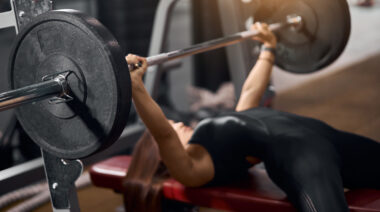One of the most common pains and injuries I see in my clinic is shoulder pain. Ranging from pain that may simply be a minor annoyance during bench press to pain that completely limits range of motion leaving the client with limited function and discomfort all day long.
Either way, shoulder pain is affecting my clients’ workouts, but this is a pain that can be fixed – or better yet, prevented.
Lacrosse Balls to the Rescue
Obviously the best solution for shoulder pain is to go see a professional. A physical therapist can work with you and tell you exactly what the issue is – and exactly the steps you need to take to fix it.
RELATED: The New Age of Physical Therapy
But what about foam rolling, aka self-myofascial release (SMR)? Foam rolling works so well for the rest of your body, but how the heck are you supposed to get that same feeling in your shoulder using a huge foam roller?
Enter the lacrosse ball. This small, dense ball is the perfect size to release muscles in and around your shoulder, helping you feel awesome post release session. (Note: If the lacrosse ball is too hard and causes too much pain, try a tennis ball instead until you get used to it and can progress to the lacrosse ball.)
Check out these five simple and awesome ways to use the lacrosse ball to get you shoulder feeling top-notch.
SMR for Your Pecs
This is best done in a doorway or on a wall. Place the lacrosse ball on the wall and lean your chest into it, with your pecs against the ball. Then roll the length of your pecs. You can also rotate your shoulder externally and internally with the ball on the pecs.

SMR for Your Upper Traps
The upper traps are a muscle I often have to work on for my clients. This muscle gets notoriously tight and full of knots. This is particularly true for anyone who sits all day at a computer, is stressed out, or doesn’t always use the right form for pushing and pulling exercises. (Believe it or not, it is also a problem area for anyone who is always cold and shrugging the shoulders to try to keep warm.)
READ: I’ve Jacked Up My Shoulder: What Did I Damage and What Do I Do Now?
One of the problems with the upper traps is that it is a difficult muscle to release and work on by yourself – until now, that is. All you need is a barbell on a rack (or a pull up bar in your doorway), a lacrosse ball, and some tape.
What you do:
- With the lacrosse ball taped to the bottom of the barbell, stand underneath it, driving your traps into the lacrosse ball.
- Make a circle with your shoulder, bringing it all of the way up in the air, and back down.
- You can also add intensity to this by stretching your bringing your opposite ear to your opposite shoulder, stretching out the traps at the same time. Trust me – you will know when you’ve found the spot you need to work on!
Note: If moving your arm in this way hurts you normally (without the lacrosse ball), don’t move your arm into the painful range. Just focus on a range that is pain-free or on moving only your neck.
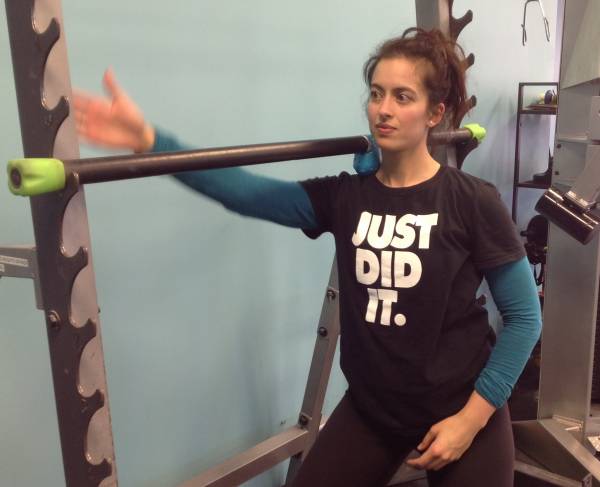
SMR for your Rhomboids and Posterior Shoulder
Option One:
- Place the lacrosse ball between your shoulder blade and your spine (make sure you’re not on bone) and lie down on the ground, relaxing your head on the ground, as well.
- As with your traps, move your arm above your head and in a circle. Do this the whole length of your shoulder blade, making sure to spend extra time on the areas that are especially painful.
Remember: Just like with your traps, if the range of motion usually hurts, make sure you limit the size of your shoulder circle.
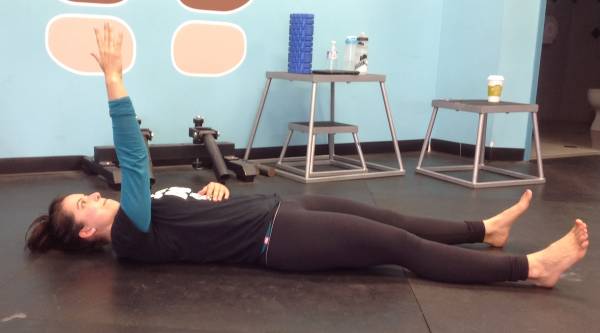
Option Two:
The second way to use the lacrosse ball for your rhomboids and posterior shoulder is to do it against the wall. This is a good position if the lying on the floor is too much pressure for you or if you can’t go through full range of motion with your shoulder circles.
RELATED: 5 Simple Solutions to Shoulder Pain
For this release, the lacrosse ball will go in the same position on your back, but you will be leaning into it against the wall. Then, you can either move up and down, do your arm circles, or both.
SMR for Your Lats
This can be done either on the floor or against the wall. Warning: Doing it against the floor will definitely hurt a little bit more.
- Put the lacrosse ball on your lat, which is just under your armpit and toward your back.
- Externally rotate your shoulder (palm out).
- Roll backward and forward, or if it’s too painful to do so, just hang out for bit.
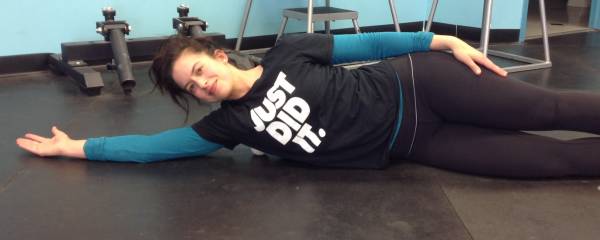
SMR for Your Triceps
This one is pretty simple. You can do this on a tabletop or plyo box, against the wall, or on the floor. Once in position, you simply roll your triceps with the lacrosse ball.
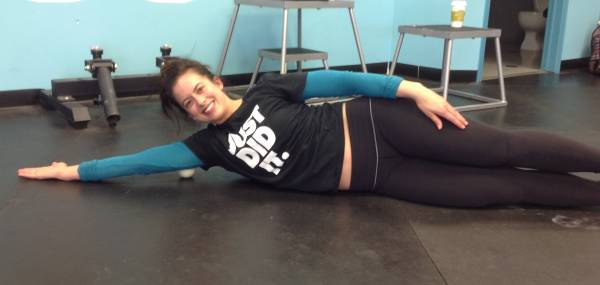
How Long Should You Do SMR?
There is no hard-and-fast rule when it comes to the length of time you do SMR on your shoulder. Doing some is step one. Doing a bit more, is step two. But realistically, it will depend on your tolerance and how painful the movements are.
“There is no hard-and-fast rule when it comes to the length of time you do SMR on your shoulder. Doing some is step one. Doing a bit more is step two.”
About two minutes per muscle is a good goal, meaning this whole sequence should take about ten minutes. Honestly, though, even just spending a minute on each will give you some benefit, so being tight for time isn’t an excuse to skip this recovery session.
A Final Note
Doing these moves and releases are awesome for you and your shoulder, and you will feel great afterward. But this practice does not in any way replace the need for strengthening your shoulder. The sequence outlined above should be done in conjunction with shoulder strengthening exercises, not in lieu of. Now, get rolling!
Photo 1 courtesy of Shutterstock.



